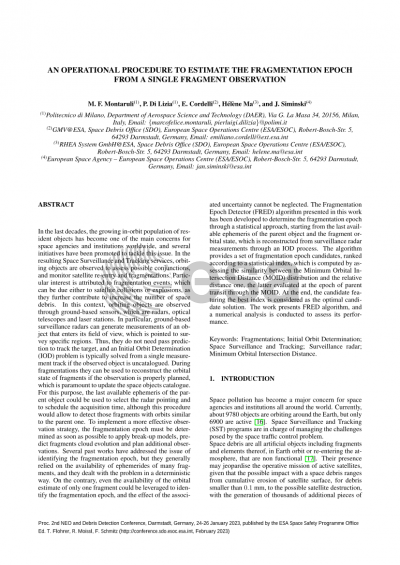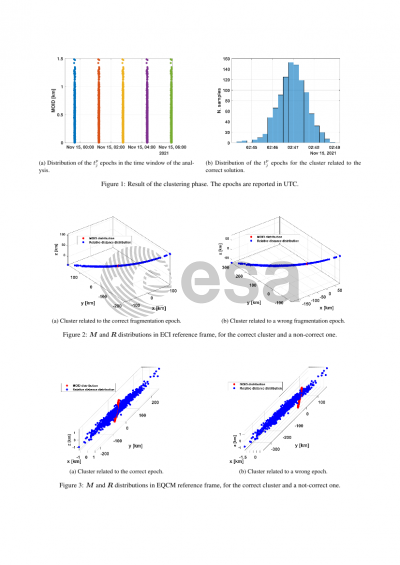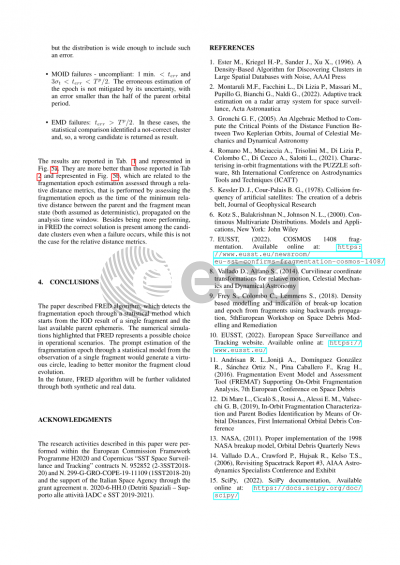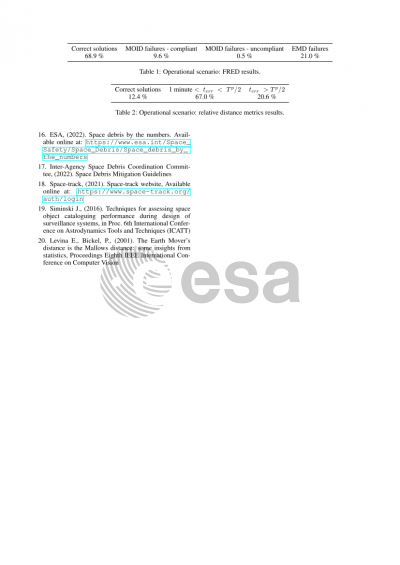Document details

Abstract
In the last decades, the growing in-orbit population of resident objects has become one of the main concerns for space agencies and institutions worldwide, and several initiatives have been promoted to tackle this issue. In the resulting Space Surveillance and Tracking services, orbiting objects are observed to assess possible conjunctions, and monitor satellite re-entry and fragmentations. Particular interest is attributed to fragmentation events, which can be due either to satellite collisions or explosions, as they further contribute to increase the number of space debris.
In this context, orbiting objects are observed through ground-based sensors, which are radars, optical telescopes and laser stations. In particular, ground-based surveillance radars can generate measurements of an object that enters its field of view, which is pointed to survey specific regions. Thus, they do not need pass prediction to track the target, and an Initial Orbit Determination (IOD) problem is typically solved from a single measurement track if the observed object is uncatalogued. During fragmentations they can be used to reconstruct the orbital state of fragments if the observation is properly planned, which is paramount to update the space objects catalogue. For this purpose, the last available ephemeris of the parent object could be used to select the radar pointing and to schedule the acquisition time, although this procedure would allow to detect those fragments with orbits similar to the parent one. To implement a more effective observation strategy, the fragmentation epoch must be determined as soon as possible to apply break-up models, predict fragments cloud evolution and plan additional observations.
Several past works have addressed the issue of identifying the fragmentation epoch, but they generally relied on the availability of ephemerides of many fragments, and they dealt with the problem in a deterministic way. On the contrary, even the availability of the orbital estimate of only one fragment could be leveraged to identify the fragmentation epoch, and the effect of the associated uncertainty cannot be neglected.
The Fragmentation Epoch Detector (FRED) algorithm presented in this work has been developed to determine the fragmentation epoch through a statistical approach, starting from the last available ephemeris of the parent object and the fragment orbital state, which is reconstructed from surveillance radar measurements through an IOD process. The algorithm provides a set of fragmentation epoch candidates, ranked according to a statistical index, which is computed by assessing the similarity between the Minimum Orbital Intersection Distance (MOID) distribution and the relative distance one, the latter evaluated at the epoch of parent transit through the MOID. At the end, the candidate featuring the best index is considered as the optimal candidate solution.
The work presents FRED algorithm, and a numerical analysis is conducted to assess its performance.
Preview








